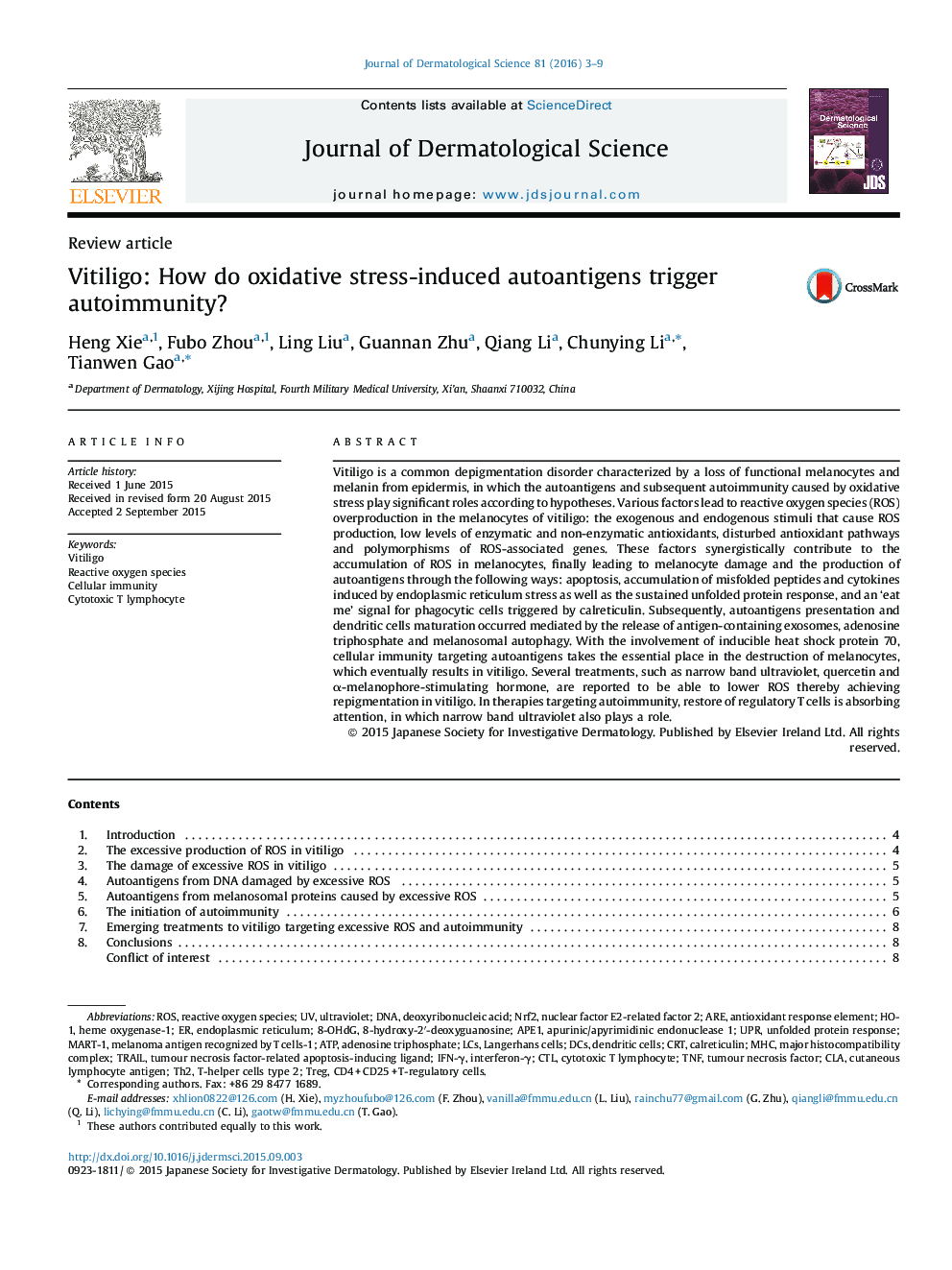| کد مقاله | کد نشریه | سال انتشار | مقاله انگلیسی | نسخه تمام متن |
|---|---|---|---|---|
| 3212543 | 1203182 | 2016 | 7 صفحه PDF | دانلود رایگان |

• The panorama of the entire procedure in vitiligo (the consecutive occurrences of oxidative stress, damaged melanocytes, autoantigens, autoimmunity and melanocyte destruction) is specifically displayed based on published studies
• The comprehensive causes of the overproduction of reactive oxygen species are summarized.
• The damage to melanocytes due to oxidative stress and the production of subsequent autoantigens is illuminated in detail.
• The specific mechanisms of how autoantigens trigger autoimmunity in vitiligo is demonstrated.
Vitiligo is a common depigmentation disorder characterized by a loss of functional melanocytes and melanin from epidermis, in which the autoantigens and subsequent autoimmunity caused by oxidative stress play significant roles according to hypotheses. Various factors lead to reactive oxygen species (ROS) overproduction in the melanocytes of vitiligo: the exogenous and endogenous stimuli that cause ROS production, low levels of enzymatic and non-enzymatic antioxidants, disturbed antioxidant pathways and polymorphisms of ROS-associated genes. These factors synergistically contribute to the accumulation of ROS in melanocytes, finally leading to melanocyte damage and the production of autoantigens through the following ways: apoptosis, accumulation of misfolded peptides and cytokines induced by endoplasmic reticulum stress as well as the sustained unfolded protein response, and an ‘eat me’ signal for phagocytic cells triggered by calreticulin. Subsequently, autoantigens presentation and dendritic cells maturation occurred mediated by the release of antigen-containing exosomes, adenosine triphosphate and melanosomal autophagy. With the involvement of inducible heat shock protein 70, cellular immunity targeting autoantigens takes the essential place in the destruction of melanocytes, which eventually results in vitiligo. Several treatments, such as narrow band ultraviolet, quercetin and α-melanophore-stimulating hormone, are reported to be able to lower ROS thereby achieving repigmentation in vitiligo. In therapies targeting autoimmunity, restore of regulatory T cells is absorbing attention, in which narrow band ultraviolet also plays a role.
Journal: Journal of Dermatological Science - Volume 81, Issue 1, January 2016, Pages 3–9